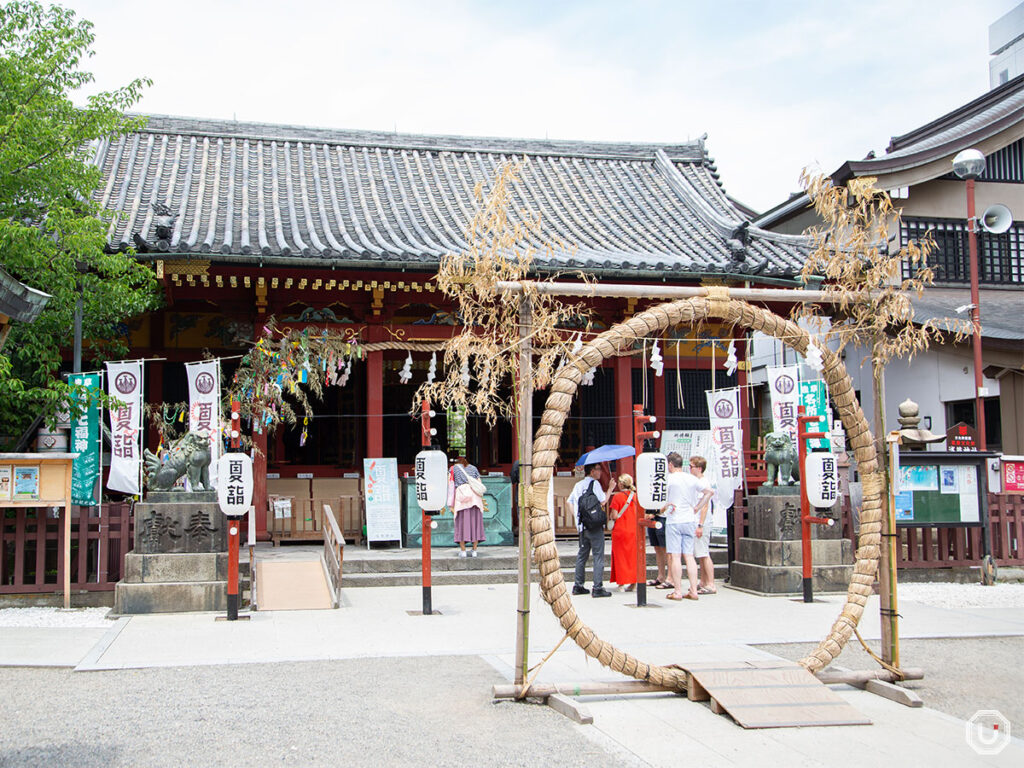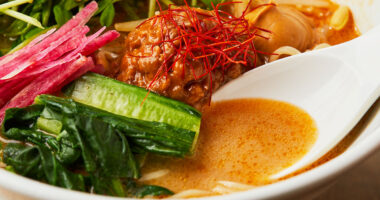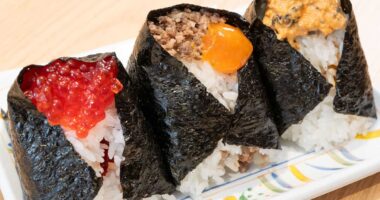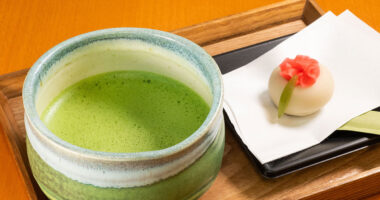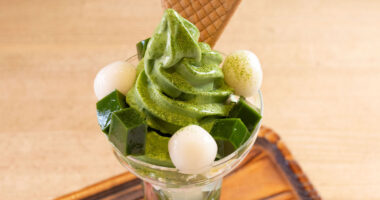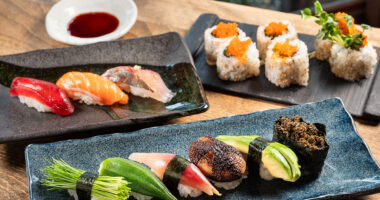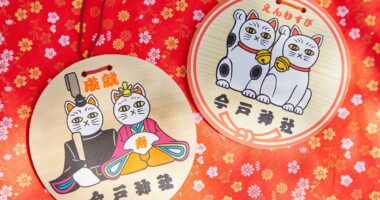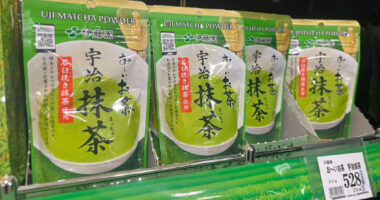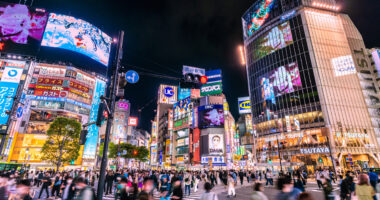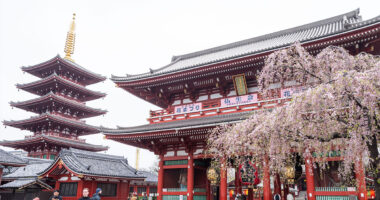Asakusa is one of Japan’s top tourist destinations. Every day, countless visitors travel the 820-foot-long, shop-lined path leading to the famous Sensō-Ji Temple. However, just to the right of its main hall lies the often-overlooked Asakusa Shrine.
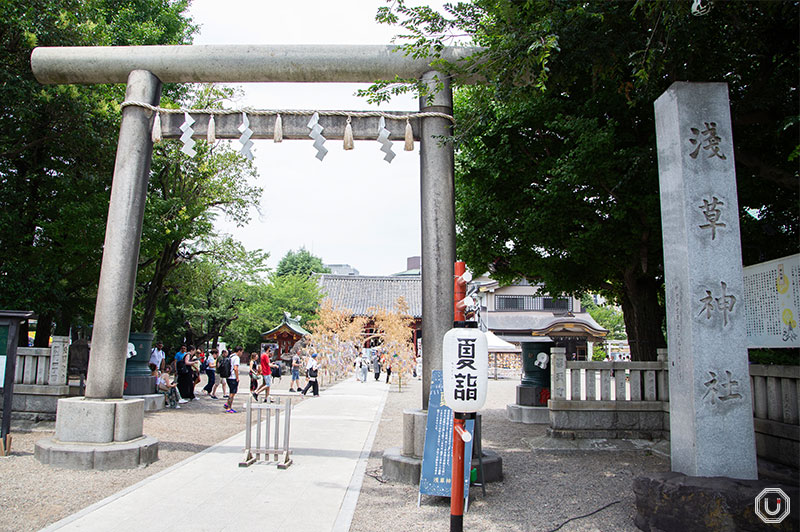
A Japanese National Treasure with 350 Years of History
When you arrive at Asakusa Shrine, start by bowing at the torii gate before entering. Next, cleanse your hands and mouth at the purification water basin called temizuya or chōzuya, meaning “hand water station.”
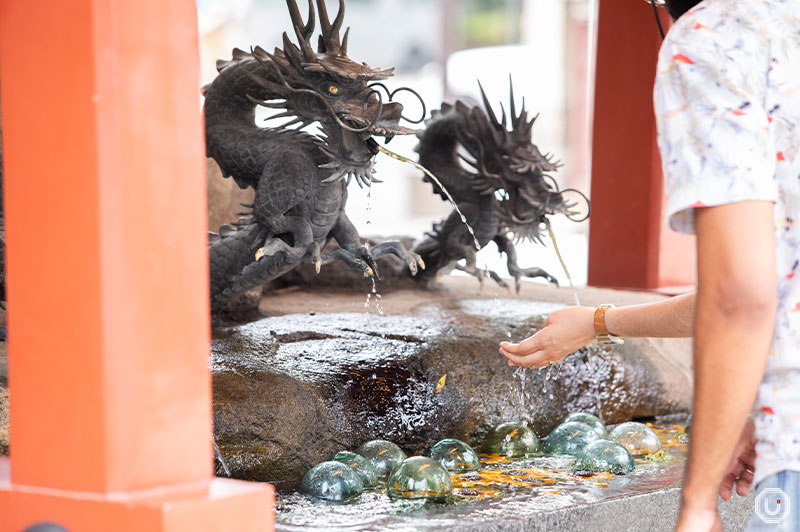
Once you have cleansed yourself with shimizu (pure water), proceed to the main hall. To pay your respects, follow the ritual of two deep bows, two claps, and one final deep bow.
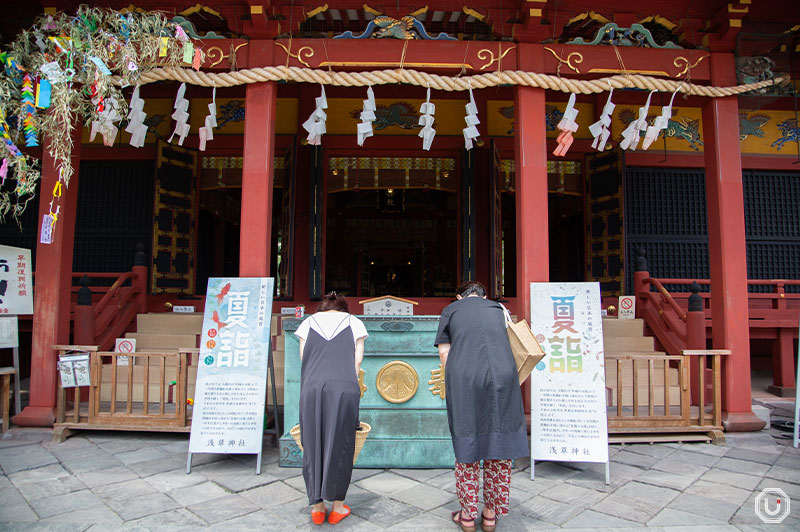
The main hall of Asakusa Shrine was built in 1649 by Tokugawa Iemitsu, the third shogun of the Edo period. Despite the wars and the Great Kanto Earthquake that devastated much of Tokyo, Asakusa Shrine has remarkably retained its original structure for over 350 years, making it a designated Important Cultural Property of Japan.
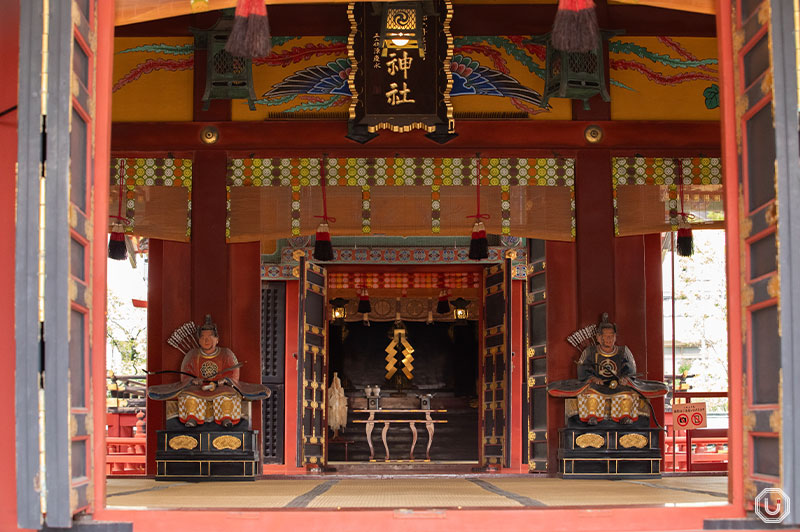
Main hall of Asakusa Shrine
When viewing the main hall, be sure to notice the vibrant spirit animals painted on its outer walls. These colorful and beautifully depicted creatures are sure to draw your attention.
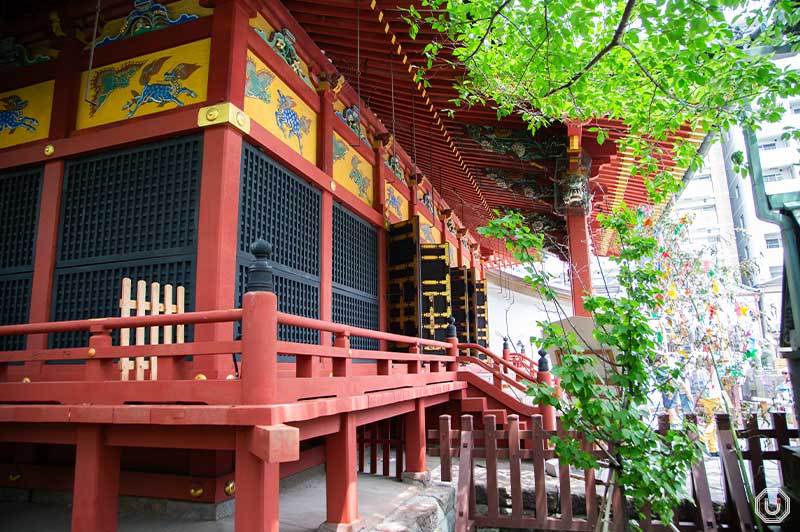
Members of the Four Spirit Animals from Chinese mythology, they include the phoenix, the kirin (also spelled qilin), and the flying dragon. Each spirit animal symbolizes peace and is believed to bring happiness to the people.
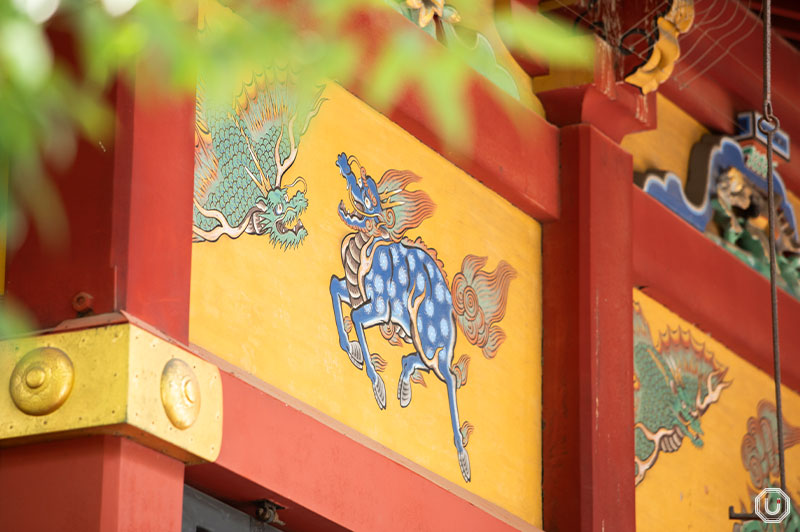
Flying dragon (left), kirin (right)
Fulfill your love wishes with the adorable guardian dog couple
Unlike typical shrines that place guardian komainu (lion-dog) statues meant to ward off evil on either side of the central path leading to the main shrine, Asakusa Shrine features a unique pair of komainu nestled together.
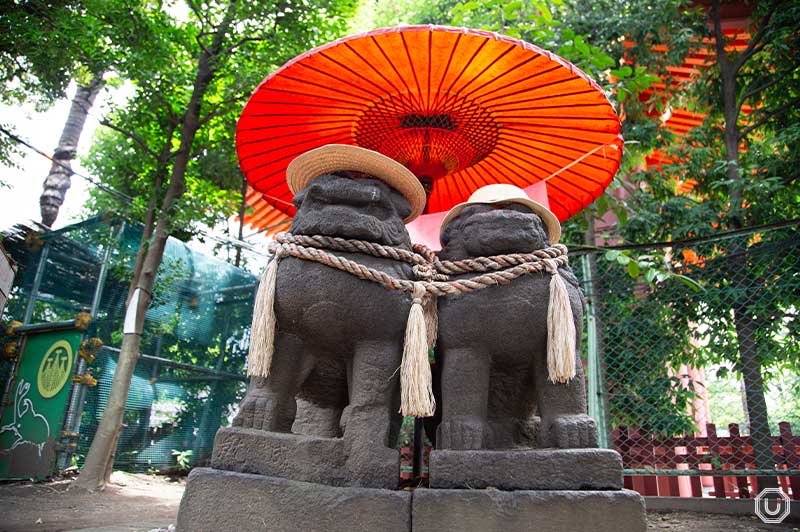
Guardian dog couple statue
These statues, known as meoto komainu (meoto meaning “wife and husband”) are believed to bring blessings for love and marital harmony. Their tails are shaped like hearts. Don’t just look at the front—make sure to check their adorable backs too!
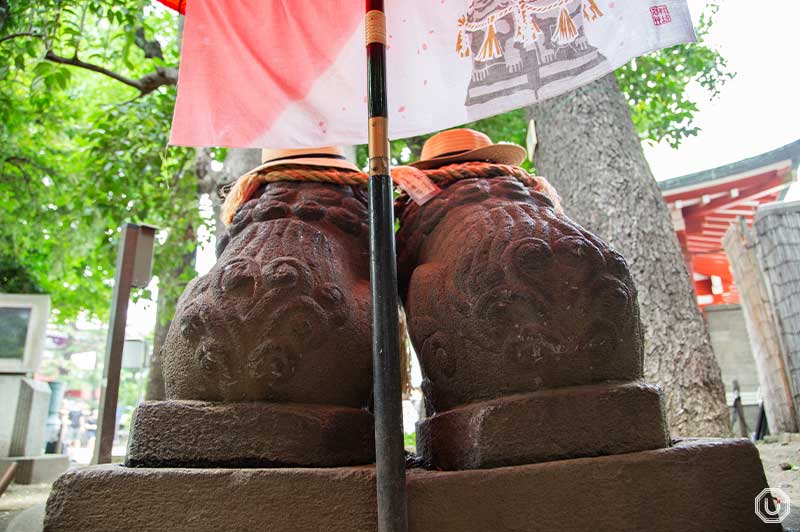
Choose from various Asakusa Shrine seals and amulets
After your visit, don’t forget to get a goshuin (a special seal obtained at Japanese shrines or temples). There are three types available year-round: “Asakusa Shrine,” “Ebisu-sama” (the Japanese god of fishermen and luck), and “Hikan Inari Shrine” (also located on the grounds of Asakusa Shrine). Limited edition designs are also available during special times like New Year and festivals, making each visit a unique experience.
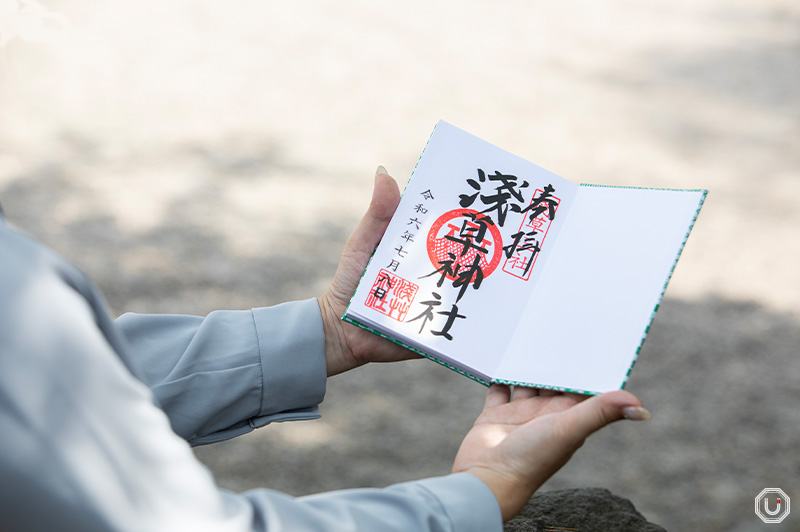
Goshuin 500 JPY
At Asakusa Shrine, the goshuin is recorded in a goshuinchō (seal book), which you can bring with you or purchase on-site if you don’t have one. Their original goshuinchō features traditional Edo komon (finely detailed decorative patterns developed in the Edo period) and is available in pink, navy, and green.
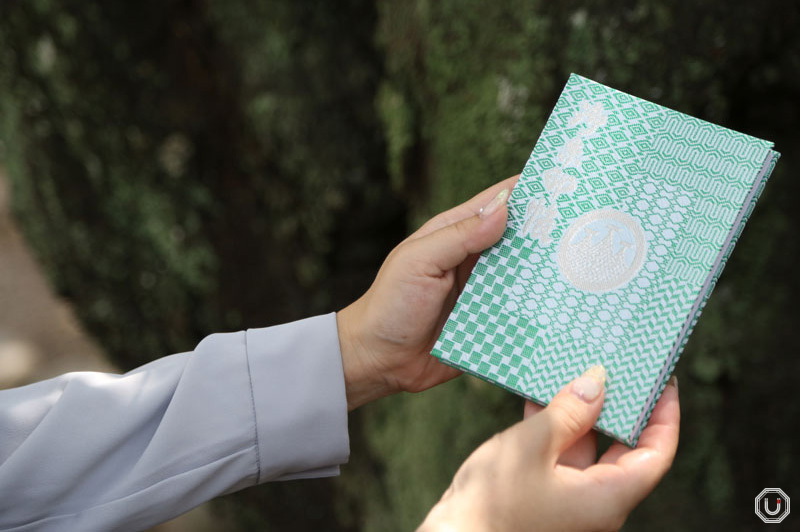
Goshuin book (Edo komon pattern) 1,000 JPY
Among the shrine’s omamori (amulets available at Japanese shrines and temples and granting good luck or protection), the “Proof of Shrine Visit” and the daijōbu mamori stand out. The Proof of Shrine Visit opens like a book, revealing a 3D paper model of Asakusa Shrine’s mikoshi (portable shrine). If you buy one, you can display it in your home and enjoy its charms.
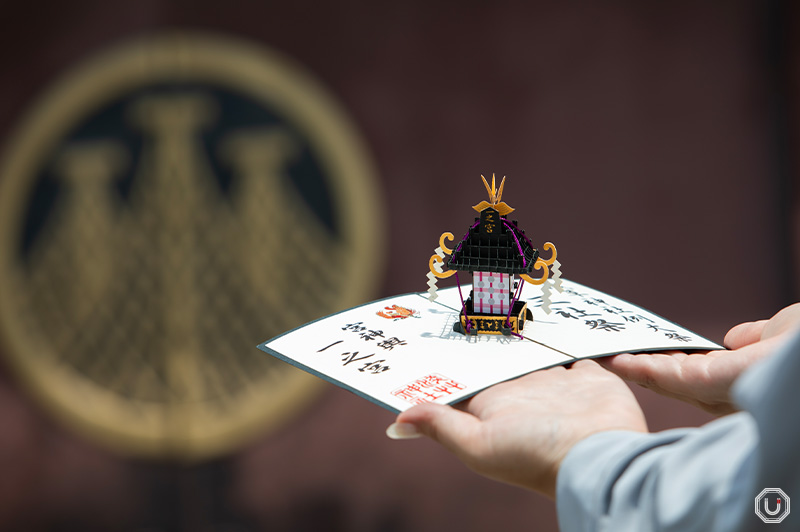
“神社参拝の証,” Proof of Shrine Visit 1,000 JPY
The daijobu mamori is a charming, small amulet measuring about 4.5cm by 2.5cm (1.8″ by 1″). Featuring the word daijōbu (meaning “It’s okay”) in the center, it is believed to offer protection from disasters and safeguard one’s health. The amulet embodies the hope that “through the power of the gods, all troubles and worries will disappear, allowing you to live peacefully.” When you carry it, you’ll feel as if the gods are reassuring you, saying, “It’s okay.”
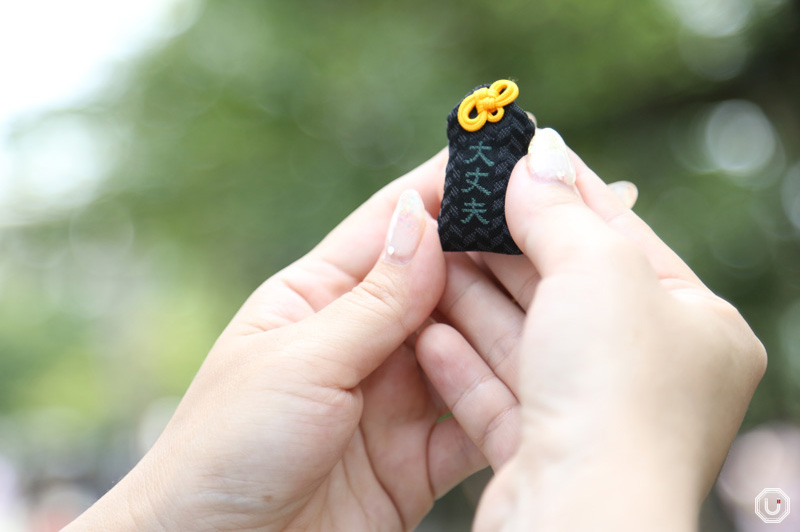
“大丈夫守,” Daijobu mamori 550 JPY
Catch some good luck with unique fortune slips and fox votive tablets
Asakusa Shrine offers a unique omikuji (fortune slip available at Japanese shrines or temples) known as tai mikuji (with tai meaning sea bream in Japanese). Inspired by the fishing activities of the shrine’s deity, obtaining this omikuji involves using a small fishing rod to catch the sea bream-shaped fortune.
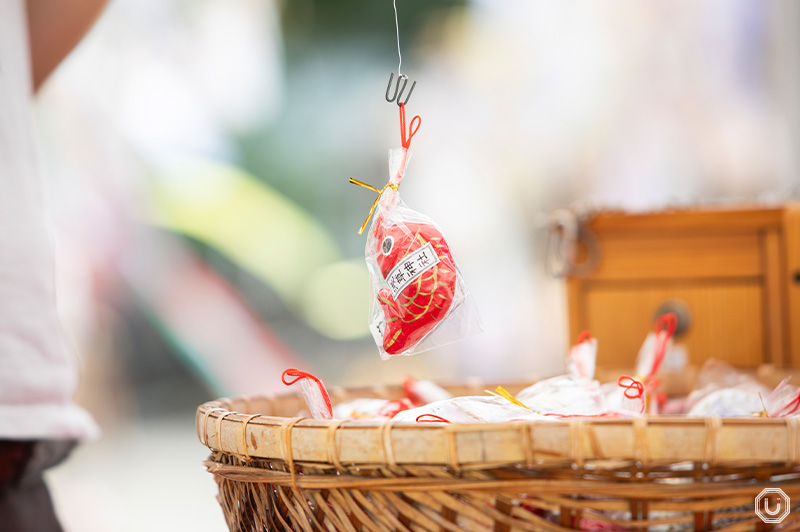
“鯛みくじ,” Tai mikuji 300 JPY
The ema (wooden votive tablets available at Japanese shrines or temples) at Asakusa Shrine is shaped like a ginkgo leaf and features a fox on its front side, adding a whimsical touch to your wishes and prayers.
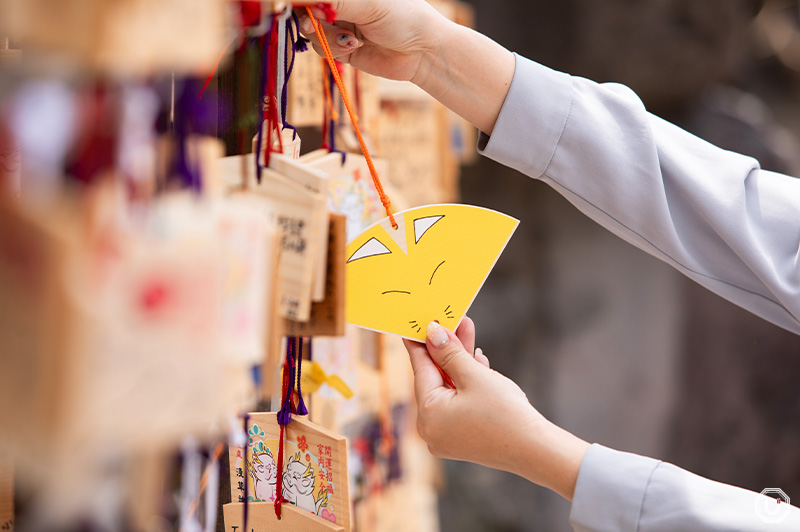
Fox ema 800 JPY
Hikan Inari Shrine and various stone monuments
To the right of Asakusa Shrine’s main hall, you’ll find Hikan Inari Shrine, a subsidiary shrine. Visitors come here to pray for career success and promotions, or to rent kimonos for memorable photos in front of the shrine. Throughout the grounds, you’ll spot fox statues, the messengers of the harvest god oinarisama (formally known as Inari Ōkami), including a charming parent-and-child pair. Be sure to look for it when you visit.
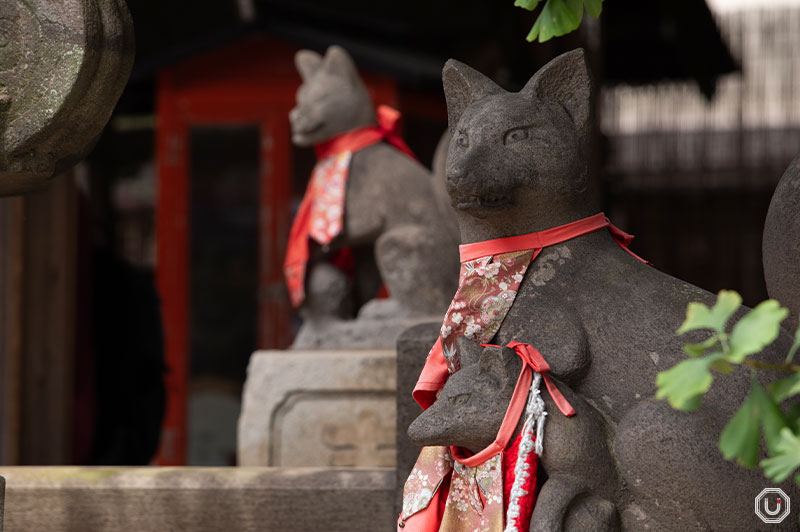
“被官稲荷神社のキツネ,” Fox (statue) at Hikan Inari Shrine
The grounds also feature stone monuments dedicated to kabuki actors and novelists, but a major attraction is the “Kochikame Monument.” This monument celebrates the famous Japanese manga series Kochira Katsushika-ku Kameari Kōen Mae Hashutsujo (lit. “This Is a Police Box in Front of Kameari Park in Katsushika Ward”), known in English as KochiKame: Tokyo Beat Cops. The monument depicts the protagonist Kankichi Ryōtsu and the phrase “Friendship is always a treasure,” making it a beloved spot for fans and visitors alike.
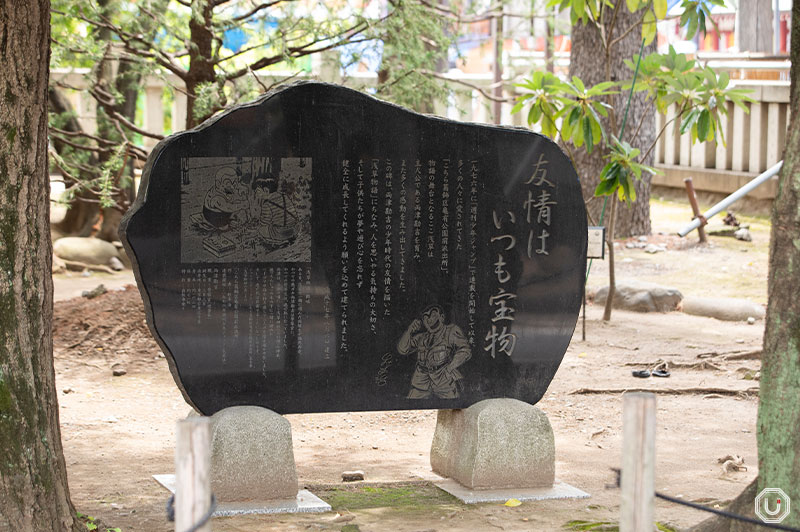
“こち亀石碑,” Kochikame Monument
Asakusa Shrine is filled with fascinating sights. Even if you’ve been to Asakusa before, you might have missed this hidden gem right next to Sensō-ji Temple. Don’t make that mistake! When you’re in Asakusa, this shrine is a must-see.
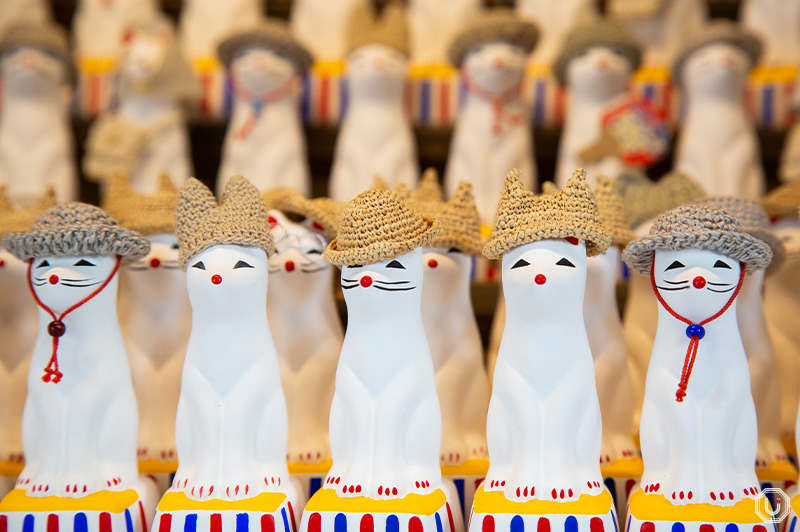
Shrine Information
| Name | 浅草神社 Asakusa Shrine |
|---|---|
| Address | 2-3-1 Asakusa, Taito-ku, Tokyo
|
| Access |
Asakusa Station 5-minute walk from Asakusa Station North Exit
Asakusa Station 12-minute walk from Asakusa Station Exit A1
|
| Phone number | 03-3844-1575 |
| Visiting Hours | 24 Hours |
| Sacred Items | Available from 9:00 to 16:00 (may vary depending on time of year) |
| Goshuin | Available from 9:00 to 16:00 (may vary depending on time of year) |
| Omikuji | Available from 9:00 to 16:00 (may vary depending on time of year) |
| Admission fee | Free |
| Official website | https://www.asakusajinja.jp/en/asakusajinja/ |
| Other information |
|
※The information in this article is current as of August 2024.
